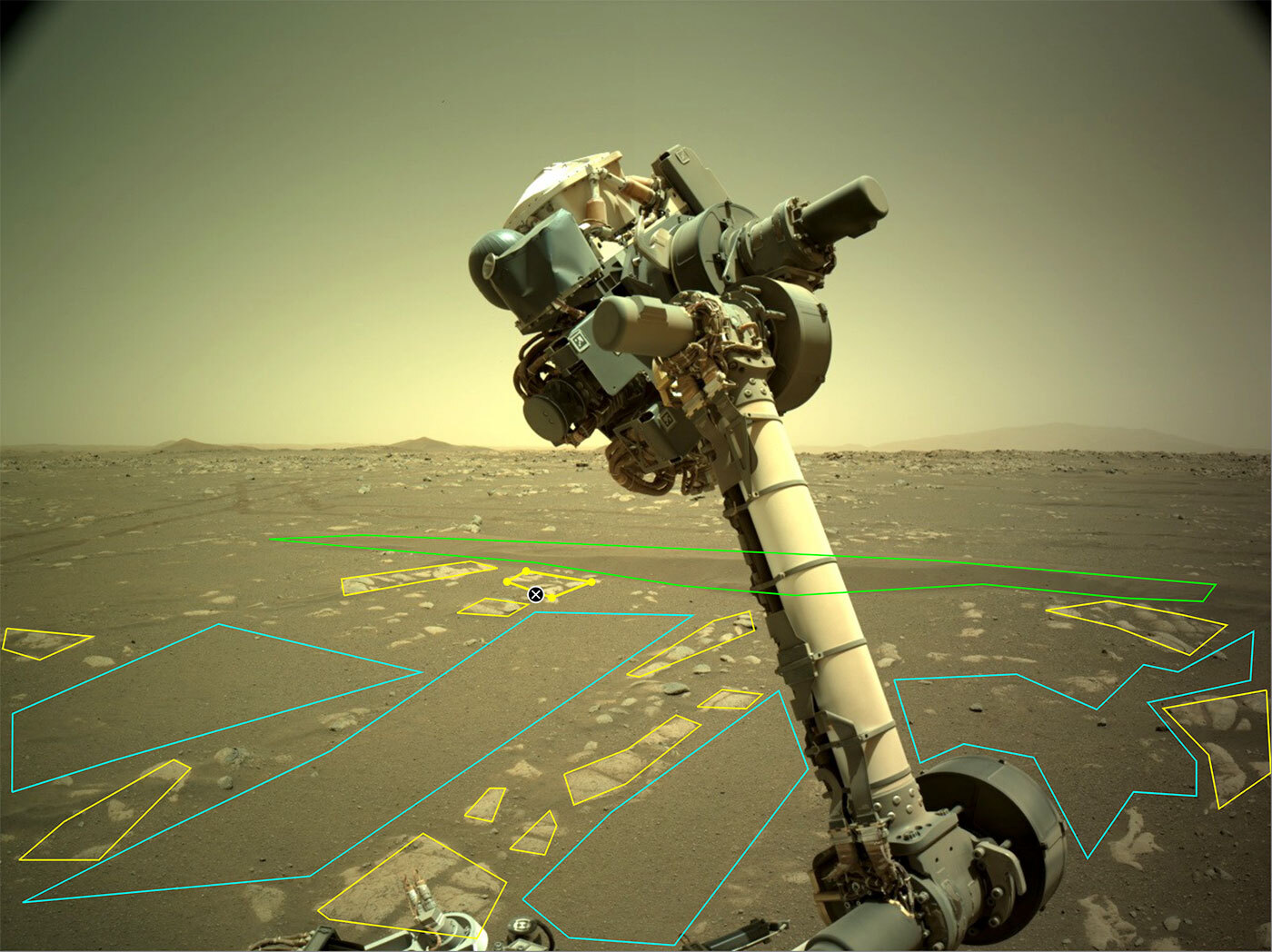
But Perseverance's engineering cameras acquire high-resolution, 20-megapixel color images. Spirit, Opportunity and Curiosity have all captured 1-megapixel images in black and white with their engineering cameras, which assist in drive planning and hazard avoidance. "Z" stands for "zoom," one of the improvements on Curiosity's high-definition Mastcam. Some of Perseverance's cameras provide more color and 3D imaging than Curiosity can collect, according to Jim Bell of Arizona State University, the principal investigator for Perseverance's Mastcam-Z camera system. Illustration depicting the science instruments carried aboard NASA’s Mars 2020 Perseverance rover. "It reinforces the remarkable level of engineering and precision that is required to build and fly a vehicle to the Red Planet." "Perseverance is just getting started and already has provided some of the most iconic visuals in space exploration history," he added. "For those who wonder how you land on Mars, or why it is so difficult, or how cool it would be to do so - you need look no further," Jurczyk said in a statement a few days after touchdown. The epic EDL video shows Perseverance's parachute snap open in the Martian sky, for example, and documents the moment the robot's six wheels hit the red dirt. Several of them filmed the rover's Mars arrival, capturing its landing in historic and unprecedented detail. Sojourner, which landed in 1997, carried only five cameras, and the twin rovers Spirit and Opportunity, which hit the red dirt in 2004, had 10 cameras apiece. Perseverance boasts nearly five times more cameras than the first Mars rover. Perseverance rover's Mars landing: Everything you need to know Perseverance rover science: Cameras, instruments and more "The ranger trigger lets us land closer to areas of scientific interest, shaving miles - potentially as much as a year - off a rover's journey." "Terrain-relative navigation enables us to go to sites that were ruled too risky for Curiosity to explore," said JPL's Al Chen, Perseverance's EDL lead.

As the rover descended through the Martian skies, it used a computer to compare the landscape with pre-loaded terrain maps, guiding itself to a safe landing site and making corrections on the way down.Īnother new feature, known as range trigger, used location and velocity information to determine when to open the supersonic parachute, narrowing the landing ellipse by more than half. For example, NASA's Jet Propulsion Laboratory in Southern California, which manages the Mars 2020 mission, developed new landing technology called terrain-relative navigation. Both rovers hit the Mars atmosphere at tremendous speeds, deployed a supersonic parachute after friction slowed them down enough, and were finally lowered gently to the red dirt on cables by a rocket-powered "sky crane."īut Perseverance had some EDL upgrades that Curiosity did not enjoy. Perseverance also used the same entry, descent and landing (EDL) strategy as Curiosity. "These will gather science data in ways that weren't possible before." Perseverance's seven instruments "build on the success of MSL, which was a proving ground for new technology," said George Tahu, NASA's Perseverance program executive. Curiosity's main task involves assessing the habitability of ancient Mars, whereas Perseverance will hunt for evidence of ancient Martians.

But those instruments are quite different than the gear aboard Curiosity, because the two rovers have divergent goals. Like Curiosity, Perseverance has a rectangular body, six wheels, a robotic arm, a drill for sampling rocks, cameras and scientific instruments. (1,025 kilograms), Perseverance weighs less than a compact car. Perseverance is about 10 feet long (not including its robotic arm), 9 feet wide, and 7 feet tall (about 3 meters long, 2.7 meters wide and 2.2 meters tall).

Roughly 85% of Perseverance's mass is based on Curiosity "heritage hardware," saving NASA time and money and reducing risk considerably, agency officials have said. Like Curiosity, the Perseverance rover was built by engineers and scientists at NASA's Jet Propulsion Laboratory in Pasadena, California.


 0 kommentar(er)
0 kommentar(er)
